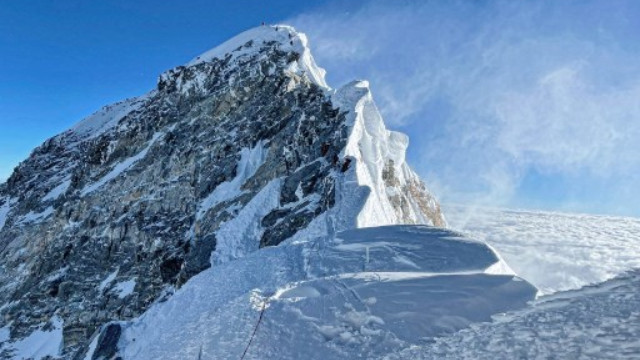Have you climbed Everest? New research shows there is a good chance your germs from coughs and sneezes are preserved. According to a study led by the University of Colorado Boulder, climbers on Everest are leaving behind microbes that could survive for decades or even centuries. Let’s take a closer look: According to NDTV, the research was published last month in the Arctic, Antarctic, and Alpine Research journal. The journal is published by the Institute of Arctic and Alpine Research (INSTAAR) at the University of Colorado Boulder. According to the website Tech Explorist, the research looked at microbes recovered from three sediment samples at South Col. Scientists used both culturing and next-generation sequencing approaches (16S rRNA gene, internal transcribed spacer [ITS] region, and 18S rRNA gene sequencing) to identify the samples. This marks a change as experts previously could not identify human-associated microbes in samples collected above 26,000 feet. The peak of Mount Everest is 29,031 feet above sea level. The area from which the team led by microbial ecologist Nicholas Dragone took samples is around 26,000 feet above sea level, according to the website Science Alert. What did the research find? The team mostly detected microbes similar to “extremophilic” organisms which have been found in the Andes and Antarctica. The most plentiful organism they found was a fungus in the genus Naganishia that can withstand extreme levels of cold and UV radiation.
Researchers also found microbes such as Staphylococcus and Streptococcus, according to Science Alert.
While such bacteria are found in the soil, the genetic sequences matched species found on the skin and mouths of human beings. The samples were collected around 558 feet from where humans usually set up camp, as per the website. The team, which has sampled soils from Antarctica and the Andes to the Himalayas and the high Arctic, noted that human-associated microbes don’t show up in these places to the extent they appeared in the recent Everest samples. Steve Schmidt, the paper’s senior author, explained it in simple terms. “There is a human signature frozen in the microbiome of Everest, even at that elevation.” Schmidt was quoted as saying by NDTV. “Microbes are everywhere, even in the air, and can easily blow around and land some distance from nearby camps or trails. If somebody even blew their nose or coughed, that’s the kind of thing that might show up,” the professor of ecology and evolutionary biology added, as per Tech Explorist. “We predict that if we sampled in the more human-utilized areas on the mountain we may find even more microbial evidence of human impact on the environment,” the team wrote in their paper, as per Science Alert. According to the authors, the research not only highlights an invisible impact of tourism on the world’s highest mountain, but could also lead to a better understanding of environmental limits to life on Earth, as well as where life may exist on other planets or cold moons. “We might find life on other planets and cold moons,” said Schmidt. “We’ll have to be careful to make sure we’re not contaminating them with our own.” With inputs from agencies Read all the Latest News , Trending News , Cricket News , Bollywood News , India News and Entertainment News here. Follow us on Facebook, Twitter and Instagram.


)

)
)
)
)
)
)
)
)



